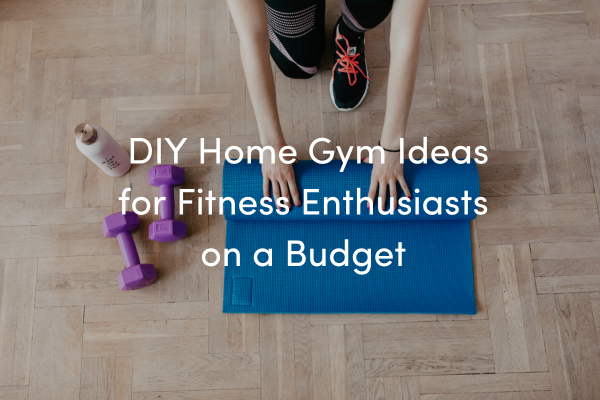Sweat Equity

Setting up a home gym doesn't have to be a costly endeavour. With some creativity and resourcefulness, you can create a workout space that fits your needs and budget. Whether setting up your gym in the summer or during the chilly winter months when the cold wind keeps you indoors, these tips and ideas will help you optimise your space to create a DIY home gym without breaking the bank.
-
Assess Your Space and Goals
Before diving into creating your home gym, assess the available space and your fitness goals. Determine how much room you can allocate for your workouts and what exercises you'll focus on. This will help you make informed decisions while keeping your budget in check. -
Prioritise Essential Equipment: While it may be tempting to splurge on fancy machines, it's important to prioritise essential equipment that fits your workout routine. Here are a few affordable and versatile options:
-
Resistance Bands: Resistance bands are a versatile and cost-effective option for strength training. They come in various resistance levels and can be used for a wide range of exercises.
-
Dumbbells: Dumbbells are another versatile and relatively inexpensive piece of equipment. Look for adjustable dumbbells, or consider purchasing second-hand weights to save money.
-
Stability Ball: A stability ball is an excellent addition to any home gym. It can be used for core workouts, balance training, and stretching exercises. They are affordable and easy to store.
-
Jump Rope: Jumping rope is an excellent cardio workout and requires minimal space and investment. It's a cost-effective way to burn calories and improve cardiovascular fitness.
-
Yoga Mat: A yoga mat is essential for floor exercises, stretching, and yoga sessions. Look for affordable options that offer adequate cushioning and grip.
-
Look for Second-hand Equipment: Consider exploring second-hand options to find affordable gym equipment. Check local classifieds, online marketplaces, and community groups for used equipment. Many people sell lightly used exercise machines, weights, and other equipment at a fraction of their original cost.
-
DIY Equipment: Get creative and build your own gym equipment using readily available materials. Here are a few ideas:
-
Plyometric Boxes: Build your plyometric boxes using sturdy wooden crates or platforms of different heights. These are great for explosive workouts and step-ups.
-
Sandbags: Fill durable bags with sand or rice to create adjustable weights. Sandbags are versatile and can be used for strength training exercises like squats, lunges, and overhead presses.
-
Suspension Trainer: Make a DIY suspension trainer using nylon webbing and handles. It allows for a full-body workout utilising your body weight.
-
Optimise Space: If you have limited space, optimising it for maximum functionality is essential. Here are a few space-saving ideas:
-
Wall-mounted Equipment: Install hooks or racks to store resistance bands, jump ropes, and yoga mats. This frees up valuable floor space.
-
Folding Equipment: Look for folding or collapsible equipment such as foldable weight benches or treadmills. These can be easily stored when not in use.
-
Multi-purpose Furniture: Use a sturdy coffee table that can double as a step-up platform or a bench for specific exercises.
-
Utilise Free Resources: Take advantage of the vast array of free workout resources available online. Numerous fitness apps, YouTube channels, and websites offer workout routines and tutorials that require little to no equipment. From bodyweight exercises to yoga sessions, you can find a variety of workouts suitable for your fitness level.
With a little creativity and resourcefulness, you can transform any corner of your home into a fitness sanctuary that keeps you motivated and fit all year round, regardless of the weather outside. Stay warm, stay active, and enjoy the convenience of a home gym tailored to your needs.